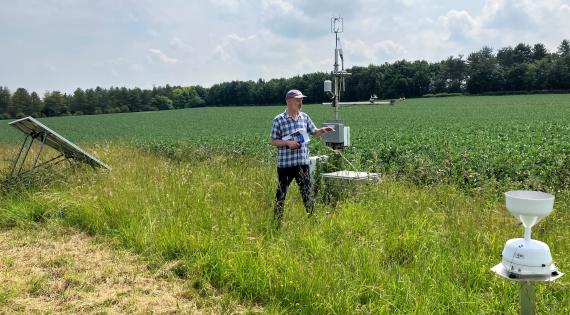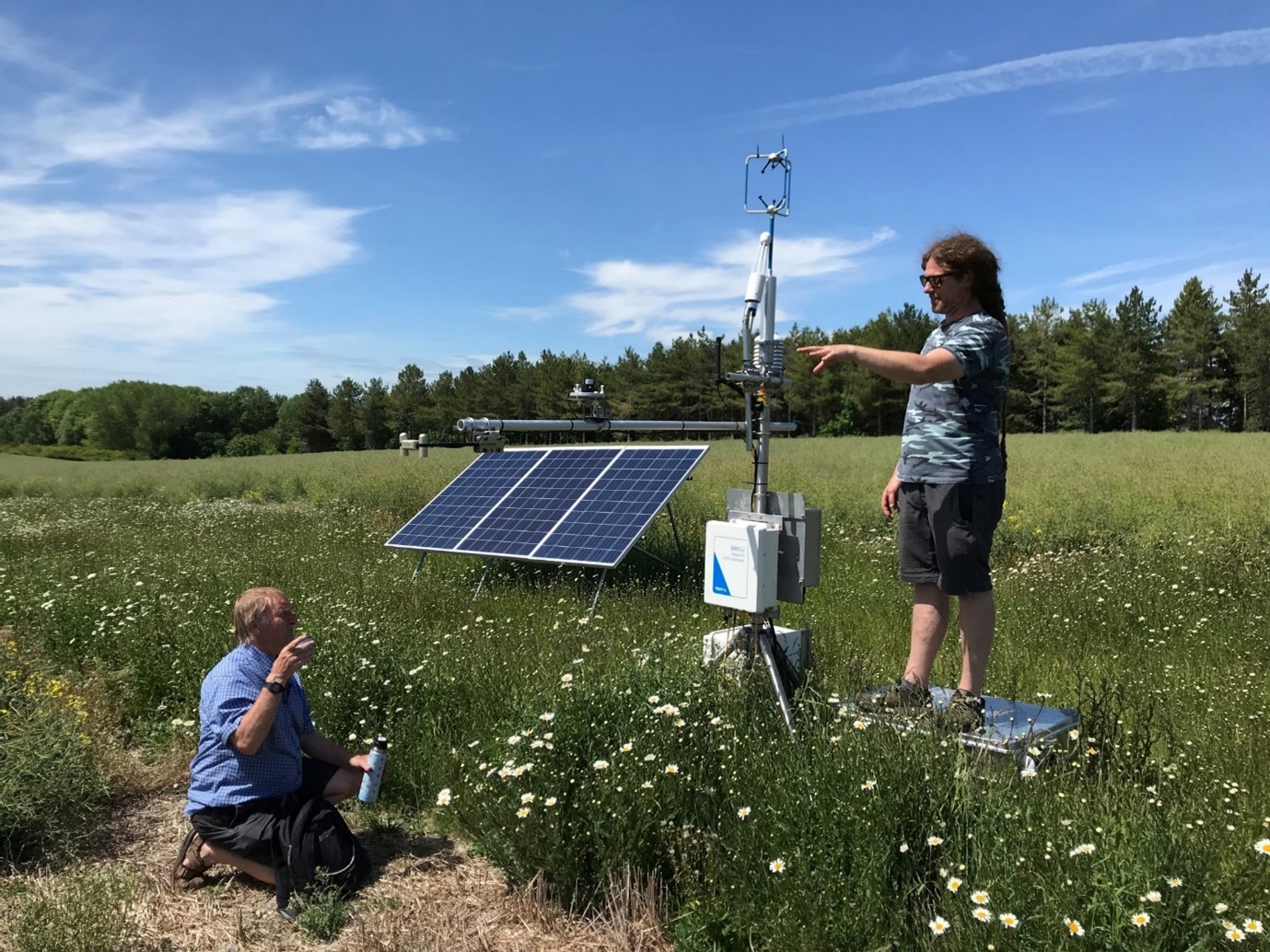To achieve targets for net zero emissions we need to know how land management interventions can reduce greenhouse gas emissions and increase carbon storage. At the same time, we need to understand the impacts of these interventions on the environment, and food and energy security.

Nationwide network of flux towers
UKCEH runs a nationwide network of flux towers that continuously monitor carbon, water and greenhouse gas exchange with the atmosphere on representative sites, including arable and bioenergy crops, horticulture on drained peatlands, pastures and inland waters.

Real-time data
Our network provides real-time data on farm management interventions designed to achieve net zero, including regenerative farming, peatland re-wetting and land-based greenhouse gas removals GGR (e.g. biochar, biomass crops for BECCS, peat formation).

Data is sent to our servers
Each flux tower records real-time exchanges of greenhouse gases, water and energy between the land surface and the atmosphere. The data is sent to our servers via mobile data telemetry and is available for scientific research.
Here is an example of land-to-atmosphere carbon dioxide exchange from a short rotation willow plantation in Lincolnshire, UK, over four years. The red/orange colour denotes net carbon capture, blue is net carbon loss. On balance the system is a significant net sink for carbon.

Supporting important applications
Data from our network supports important applications, including:
- Scope 3 emissions reporting for businesses,
- UK National Greenhouse Gas Emissions Inventory reporting
- Land management policies to achieve net zero.
Could you host or fund a flux tower on your farm?
If so, we'd love to hear from you.
